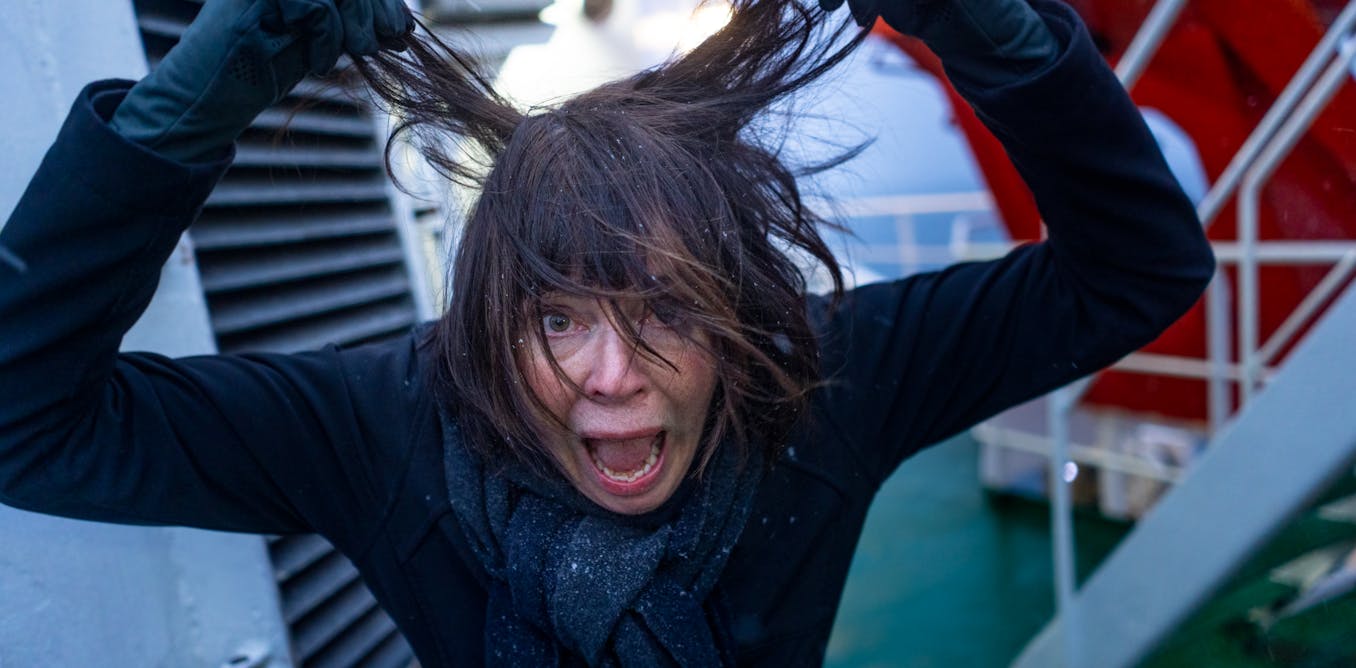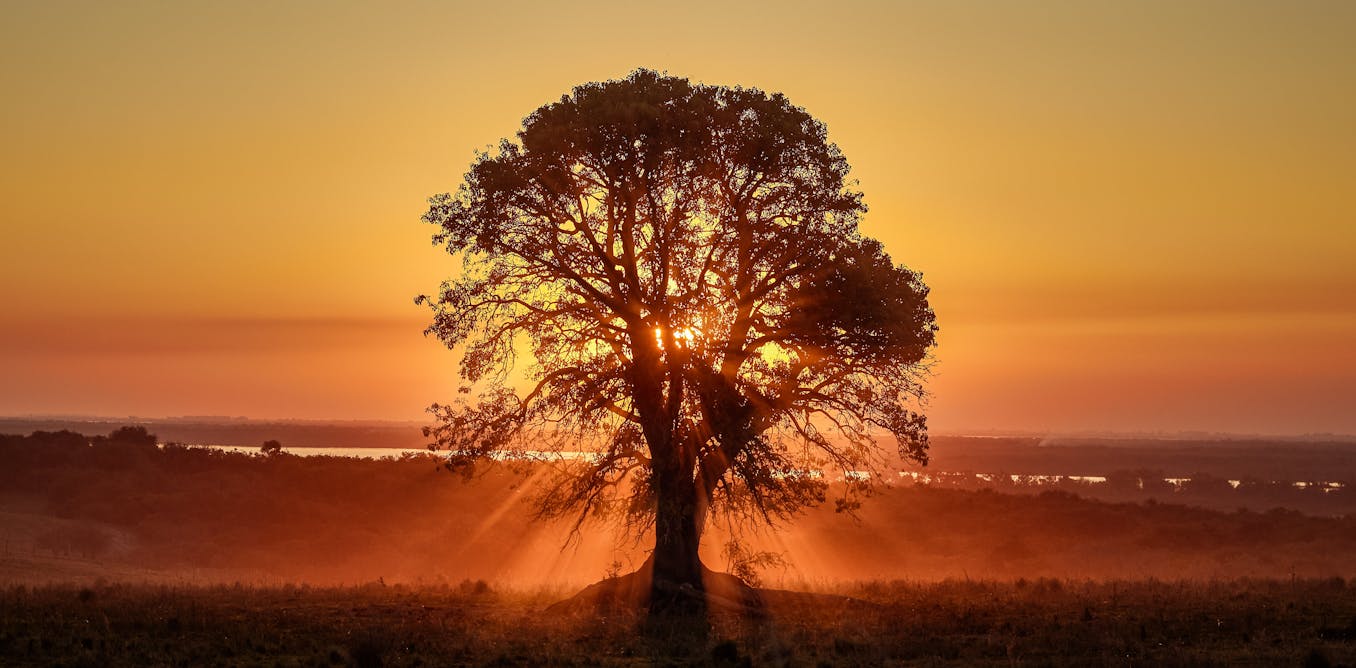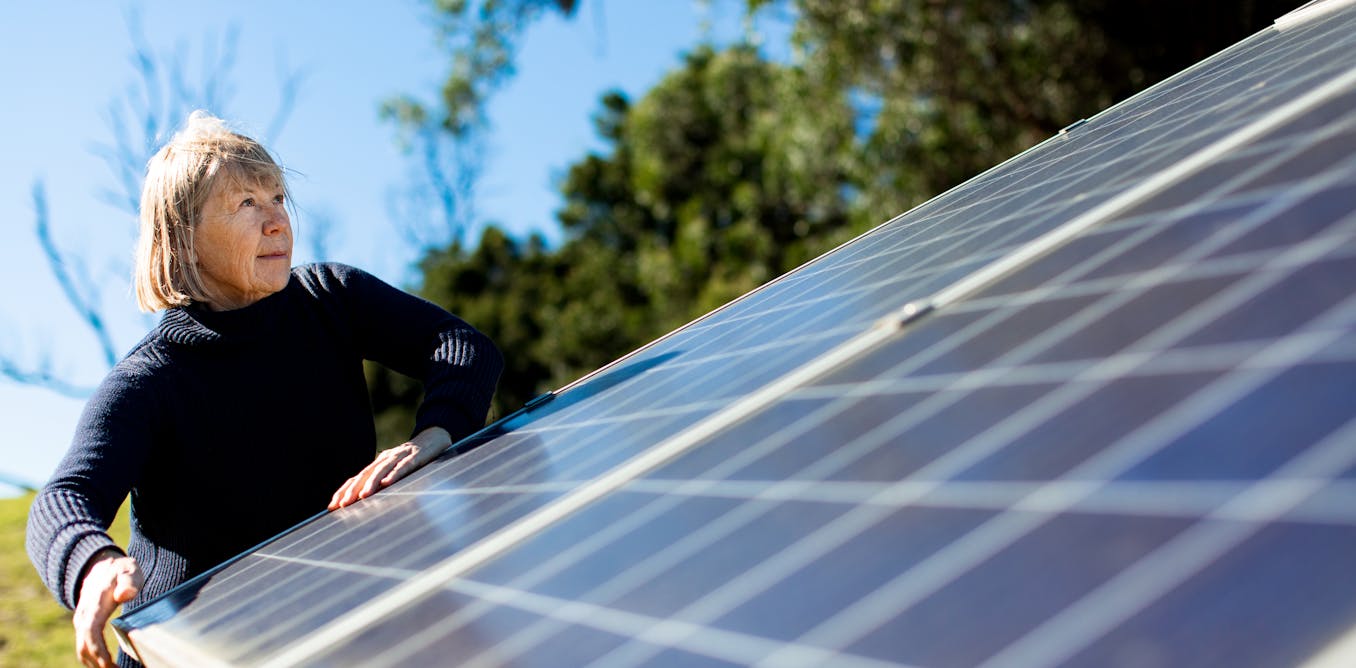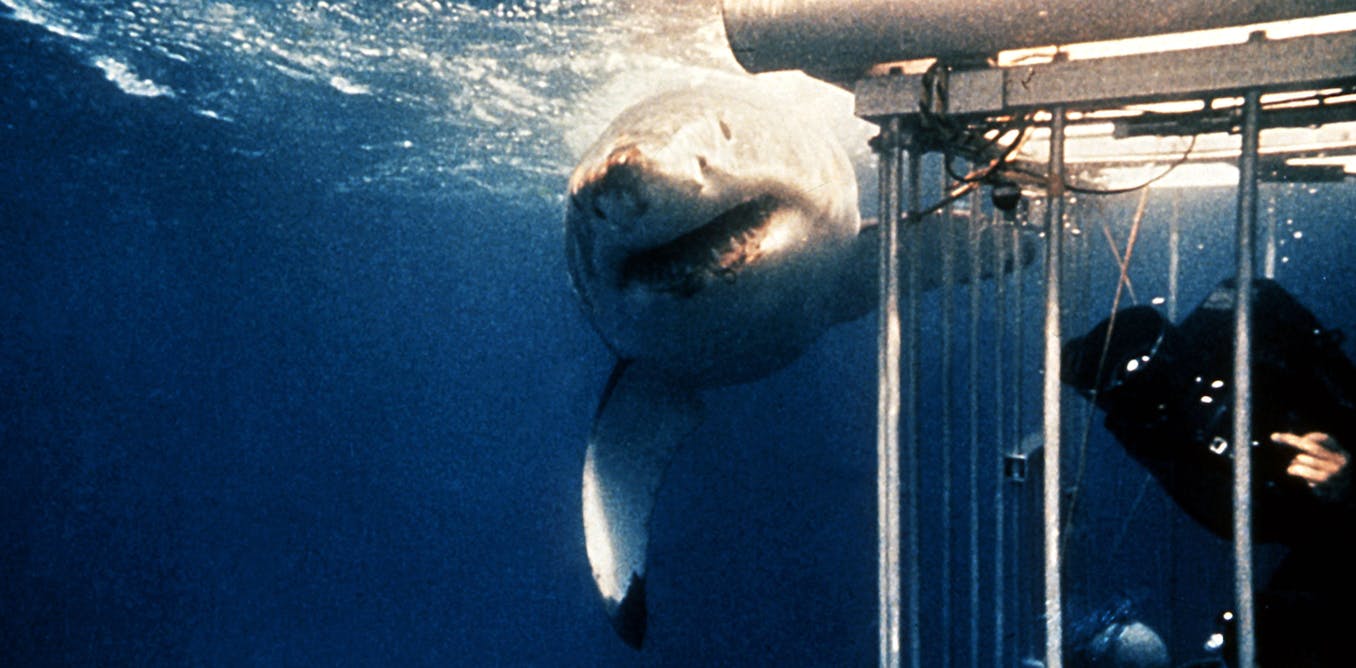How a Sanctuary for Self-Expression Can Change Lives | Lindsay Morris and Reed J. Williams | TED
“How a Sanctuary for Self-Expression Can Change Lives” is a powerful TED Talk that explores the transformative impact of Camp I Am, a safe space for gender non-conforming children and their families. Lindsay Morris and Reed J. Williams share their personal experiences and journey towards self-acceptance and authenticity.
Reed candidly reflects on their childhood, filled with confusion and judgement from society. From a young age, they had a strong desire to express their true self, despite societal expectations. Through the support of Camp I Am, Reed found a community where they could freely embrace their identity and be accepted for who they truly are. This acceptance ultimately led to Reed’s journey towards gender affirmation and living authentically as a woman.
Lindsay, as a mother of a gender-creative child, shares the challenges and triumphs of navigating gender norms and stereotypes. Through Camp I Am, Lindsay found a supportive community of parents and children on similar journeys. The camp provided a space where families could openly discuss their experiences, challenges, and triumphs.
Together, Lindsay and Reed emphasize the importance of creating safe spaces for self-expression and acceptance. By sharing their stories, they hope to inspire others to support and advocate for transgender and gender non-conforming youth. Through Camp I Am, lives are changed, and individuals are empowered to live authentically and unapologetically.
Watch the video by TED
Reed J. Williams: I spent my early years stealing my baby sister’s clothes, teaching myself to braid hair on confused babysitters and absolutely terrifying my mom and dad. Any dish towel or scarf within the limited reach of my three-year-old grasp was quickly transformed into a makeshift wig of long hair
To be skillfully tossed over shoulder with dramatic flair. My parents considered taking me to see a psychologist, but finding a doctor in rural South Carolina willing to even discuss gender with a three-year-old boy proved challenging. My parents had to actively avoid those who claimed to be able to fix me,
As we had received numerous offers from local church leaders and school teachers. For the most part, my parents were completely on their own when it came to navigating my gender non-conforming childhood. Lindsay Morris: I’m the mother of two sons who we raised on Long Island. When our oldest son was three years old,
He found his way into the depths of my closet and re-emerged triumphantly in a pair of dust-covered heels. His father and I continued to watch this daily ritual where Milo would layer on and tear off the brightest garments that he could find in my wardrobe.
While his younger brother strived to land objects in baskets, Milo, when taken to his first soccer clinic, asked innocently, “Why would anyone want to chase a ball around a field?” It was a simple but profound question, it definitely challenged gender stereotypes that were familiar to me. And it was hard to disagree with him. But still, I kept his hair buzzed short and bought him more Matchbox cars to join the dozens of others in his gem-encrusted suitcase. RJW: My mom found me hand-me-down clothes from friends with older daughters that I was free to wear around the house. But in public, I was limited to a winter stocking cap that I used to cover my short hair. I wore that hat constantly, even when I slept,
To the point where I began to develop a bald spot on the side of my head. Thankfully, my dad made me a baseball cap with a little piece of rope and a wooden bead tied to the end, meant to mimic the swinging motion of a ponytail when I walked.
This both alleviated my frustration with short haircuts and prevented premature baldness. For which I’m eternally grateful. As I got older, I had to quickly adapt to the unspoken rules of gender or face severe social fallout. I can never forget the harsh glares from parents at the preschool Halloween parade, when I dared to show up wearing a homemade unicorn costume.
The teacher who told my mom, “No one agrees with what you’re doing, and you’re going to hell for how you raise your child.” Before banning dress up for the entire class because of what I chose to put on my body. The efforts to police my gender
And somehow shape me into a “normal boy” were constant, unavoidable and entirely ineffective. LM: It was almost Halloween, a grueling time of costume negotiations for the parents of gender-creative children. At our local Target, Milo, with all the conviction of a seasoned attorney, directed me to the shoe department,
Where we would yet again visit the coveted ruby slippers. With each step, our anxieties grew, his mood mirroring my uncertainty as I wavered. There were tears and a public tantrum over those ruby slippers. And yet I denied him this simple wish, leaving him confused and deflated. What was I so afraid of?
Was it the judgmental glances of the other moms as my son paraded perfectly in discount heels at play dates? Their expressions were very memorable. Or maybe it was the grim statistics that were looming in the background. I was well aware of the rising suicide rates of LGBTQ teens. Or perhaps it was a new territory. Navigating this expression of gender that I had no vocabulary for. These denials left our son miserable.
It was a low point for me in my motherhood but also a turning point for us as a family. We all agreed it was time to stop overanalyzing gender norms: his toys, his clothing, his haircuts. And let Milo take the lead, embracing choices that rang true to him. RJW: My first psychologist introduced us to a highly protected listserv where my mom discovered a support group looking to create in-person opportunities for families with gender non-conforming kids to gather together. That summer, my mom packed her kids into a minivan and drove from Greenville, South Carolina to Washington, DC,
Where we stayed in a small hotel with four other families who allowed their sons to dress and act however they wanted. This was the first summer of Camp I Am. At just four years old, I was too young to swim in the deep end of the hotel pool without floaties,
But I relished in slumber parties and fashion shows with kids who acted just like I did, if not more flamboyantly. For the first time in my life, I was free to wear a dress in front of people who weren’t my immediate family. I could paint my fingernails
Without having to remove the polish an hour later. I remember feather boas and friendship bracelets, American Girl dolls and makeovers, and a pillowcase signed with notes of encouragement from all my new friends. I slept with that pillowcase every single night after that first camp weekend ended.
LM: “I think I’m the only one like this,” Milo said. Those words hit hard, but they also motivated me to seek families like Reed’s family facing similar circumstances. In 2008, in the early days of the internet, I typed “my son loves pink” into a search engine and found myself on the website
Of the Children’s National Medical Center in Washington, DC, where I would discover a carefully vetted listserv where parents could discuss the challenges and triumphs of raising gender-creative children. The day our family stepped into the meet and greet room of the modest hotel in Washington, DC,
We saw parents with a mix of hope and relief on their faces. This is where I would also meet Reed at age seven. Though her gender had not yet been determined. There we took in a room filled with little boys, most in hues of pink and purple, and almost all with American Girl dolls dangling at their sides or clutched tightly to their chests. The eyes of parents welled up as they entered this room.
And I remember one father with the baseball cap saying, “Whoa, I guess he’s found his tribe.” Up until this moment, we had all felt so isolated. RJW: It wasn’t until I was eight years old that I met an openly trans girl who refused to hide who she was in front of others. She was the only other camper from South Carolina,
And she wore intricate lace tights and the most gorgeous high heels I had ever seen in my entire life. She embodied Y2K vampy glam effortlessly, and I followed her around like a lost puppy, marveling at her grace and freedom to be herself.
She let me try on her treasured high heels for a day. At Camp I Am, I literally walked a mile in the shoes of a trans girl for the first time. In 2015, over three years later, I finally told my parents that I’m a girl.
At the time, everyone had a different opinion on the correct path forward. One mother from Camp I Am told my mom that her son had also come out as trans, but she had no responsibility to pay for hormone blockers or navigate social transition at their age.
She advised my mom to wait until I was 18 and I could make the decision for myself. My mom was horrified by the idea of leaving me to suffer for six more years on my own. It was then that she knew she could never inflict the hardship
Of continuing to be misperceived as a boy on me. As terrifying as it felt for my parents to consent to trans health care on my behalf, we knew that it promised the best possible outcome. By this point, we had already moved to Virginia, and we began taking monthly four-hour road trips to Richmond
For gender affirming therapy and, eventually, endocrinology appointments. I socially transitioned that summer, and I haven’t looked back since. I don’t know if I would have reached that happy conclusion without my time and the community at Camp I Am. LM: I became the de facto photographer of the closely-knit Camp I Am community in 2009, capturing the kids’ moments of freedom where they could run and twirl and sing
And express their interpretations of gender alongside their parents and their siblings. For the kids, the photos provided vibrant mementos to reassure them throughout the year. It took a lot of courage in 2012, when camp parents and children agreed to have their photographs published in the New York Times Magazine cover story,
“What’s Wrong with a Boy Who Wears a Dress?” I’ll never forget the evening. The kids were standing in front of the red barn, excitedly preparing for the annual camp fashion show, and the parents stood behind me and my tripod, mesmerized by their children’s joy. “We need to show our kids to the world,”
A mom said quietly. And one of the dads said, “That would be terrifying. But perhaps if we shared our normal with the public, it would open a dialogue that was far overdue.” RJW: When I look back at Lindsay’s photos from Camp I Am,
I see children who possess an intimate understanding of who they are. That many could only hope to someday experience. We were among the earliest experts on queer youth, running wild in the woods with glitter and flowers in our overgrown hair. The kids of Camp I Am were some of the first
To openly question why we have to behave in accordance with our sex assigned at birth? The first kids with parents willing to fight for rather than suppress our emerging identities. When I look at these images, I see liberation. I see the future. A world where kids are encouraged to express themselves
Free from judgment. Where parents are encouraged to ask questions and seek support rather than compel their children to embody arbitrary gender roles. LM: Although we parents shared a common thread, our perspectives were diverse. To put it mildly. Parents came from across the country with varying religious beliefs, political, socioeconomic backgrounds.
And it wasn’t easy. Divorces happened, a Mormon family was excommunicated. And some are uprooted, finding it simply impossible to live in unsupportive communities. Today, like Reed, many of these young adults are advocating for themselves and for their rights. Some transitioned seamlessly thanks to a lot of courage,
And also thanks to parents who educated themselves, seeking out the most appropriate care for their child, no matter where they landed on the gender spectrum. And like Reed today, there are so many success stories of the former campers. Not everyone followed the same track. Today, my son Milo identifies as a gay man
Living in New York City and studying fashion marketing and advertising at FIT. RJW: Camp I Am was an oasis, a brief reprieve from the endless harassment and judgment from strangers who claimed to know what was in my best interest. Attending camp didn’t make me trans. My parents did not make me trans. If anything, I never went out of my way to be different or unordinary. I was just encouraged to be myself, whatever that may look like. The early support that I received made it possible for me to pursue a life worth living. Today, I’m a fourth-year at the University of Virginia
Studying political and social thought and poetry writing. I’m an advocate on behalf of trans youth. I’ve spent the past two summers working as a camp counselor, helping to provide even more trans kids with that same fulfilling summer camp experience that helped make me the person I am today.
I can only hope that more parents see from my story and the story of Camp I Am, the importance of protecting and supporting trans and gender non-conforming children as my parents protected and supported me. Thank you. LM: Thank you.
About TED
The TED Talks channel features the best talks and performances from the TED Conference, where the world’s leading thinkers and doers give the talk of their lives in 18 minutes (or less). Look for talks on Technology, Entertainment and Design — plus science, business, global issues, the arts and more. You’re welcome to link to or embed these videos, forward them to others and share these ideas with people you know.
Video “How a Sanctuary for Self-Expression Can Change Lives | Lindsay Morris and Reed J. Williams | TED” was uploaded on 03/21/2024 to Youtube Channel TED






































